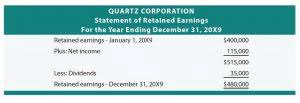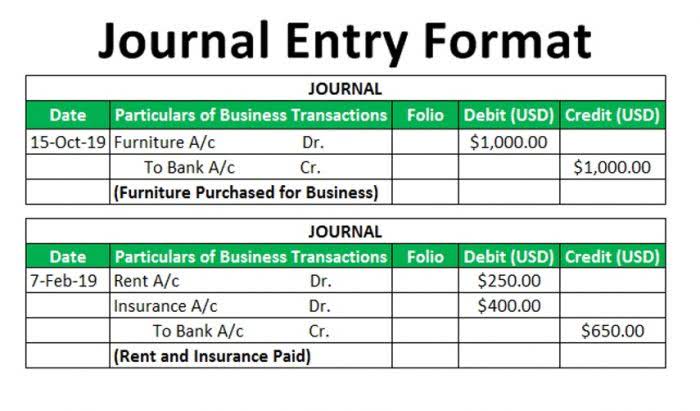
Exact accounting data is critical for evaluating project economics, making informed investment decisions, and planning for the future. It enables companies to assess project viability, allocate resources efficiently, and make strategic decisions that contribute to long-term success in the industry. Accounting methods and principles should be applied consistently from one period to another.
Production Sharing Contracts
We have the ability to trend financials over time (annual, quarterly and monthly), provide all reports in Excel and consolidate many companies into a single reporting entity. When faced with uncertainty, accountants should choose methods that are less likely to overstate assets and income. oil and gas production accounting Expenses should be recognized in the period in which they are incurred, helping to match costs with the revenue they generate. Reserves are estimated quantities of oil and gas that can be economically recovered from known reservoirs under existing economic conditions and operating methods.
- These costs include labor, maintenance, utilities, and materials used in the production process.
- Investment in upstream global oil and gas was expected to increase by 11% in 2023; however, upstream investment plans are still 47% lower when compared to 2014.
- These can include corporate income taxes, production taxes, and specific levies such as severance taxes.
- One of the primary considerations in revenue recognition is the point at which control of the product is transferred to the customer.
- These statements provide a detailed breakdown of costs incurred and revenues generated, which are then allocated to each partner based on their ownership percentage.
- Energy companies’ income statements do not have the usual Cost of Goods Sold / Gross Profit and Operating Expense distinction that you see for normal companies.
- GAAP is dynamic, and the FASB continually updates and issues new standards to address emerging issues and improve the quality of financial reporting.
Oil & Gas Financial Modeling 101
- That seems straightforward, but it gets confusing on the other financial statements because some companies apply these standards inconsistently and use a “mix” of both.
- Conversely, if the sale occurs at a processing facility, revenue is recognized once the product has been processed and delivered to the buyer.
- In each year, you assume that you produce either the production volume of that year or the remaining reserves – whichever number is lower.
- One of the major problems the oil market faces is the lack of high-quality sweet crude, the type of low-sulfur oil that many refineries need to meet stringent environmental requirements, particularly in the United States.
Investors can gain more direct exposure to the price of oil through an exchange-traded fund (ETF) or exchange-traded note (ETN), which typically invests in oil futures contracts rather than energy stocks. Because oil prices are largely uncorrelated to stock market returns or the direction of the U.S. dollar, these products follow the price of oil more closely than energy stocks and can serve as a hedge and a portfolio diversifier. A diversified oil & gas company has slightly different statements and you see more items related to its midstream and/or downstream capabilities; for a good example, click here to view Exxon Mobil’s financial statements. When it comes to oil and gas companies, everything revolves around how they treat capitalized costs. Initially, the oil company, often referred to as the contractor, bears all exploration and development costs. These costs are recoverable from the production, known as “cost oil,” once commercial production begins.

Successful-Efforts vs. Full-Cost Accounting: What’s the Difference?
Efficiency gains, cost-control measures, and capital discipline have decreased certain investment costs but the tightening monetary policy and labor-cost shortages erode these gains. When the price of oil rises, it tends to lower the demand in developed countries, but demand from growing emerging market economies is expected to increase as these countries industrialize regardless of the price of oil. This article gives a broad overview of the forces driving the oil market and how to have a financial stake in oil in your investment portfolio. Oil and gas companies spend a lot of money exploring new untapped reservoirs without any guarantee that they will find anything. Costs include acquiring land, obtaining the necessary permissions to extract, buying or leasing relevant equipment, transportation, and paying a specialist workforce’s wages.
Financial Reporting and Transparency
In addition, investors can gain indirect exposure to oil through the purchase of energy-sector ETFs. The oil market can be very confusing to both professional and individual investors, with large price fluctuations sometimes occurring on a daily basis. There’s surprisingly little to say about merger models and LBO models in the oil & gas industry. For example, if the company has undeveloped land or if it has midstream or downstream operations, you might estimate the value of those based on an EBITDA multiple (or $ per acre for land) and add them in. Simply subtract the expenses from the revenue each year and then multiply by (1 – Tax Rate) to calculate the after-tax cash flows.
Revenue Recognition
It ensures transparent financial reporting, compliance with regulations, and strategic decision-making. As an intricate discipline, oil and gas accounting plays a pivotal role in valuing assets, managing risks, and supporting sustainable practices in the exploration, extraction, and production of oil and gas resources. The full cost (FC) method is an accounting system used specifically by extractive industries such as oil and gas companies.
- The bulk of oil trading takes place in derivatives markets, utilizing futures and options contracts.
- Companies must stay abreast of these changes and adjust their accounting practices accordingly.
- KPMG professionals support businesses across the oil and gas industry, from global corporations, independent and national oil companies, as well as refining and oil field services.
- The obvious example is mining, where there’s a lot of overlap, but almost anything that depends on commodity prices is similar.
Upstream activities involve exploration and production, midstream covers transportation and storage, while downstream includes refining and marketing. Each segment has its own accounting nuances, making it essential to grasp these differences for accurate financial reporting. Oil and gas accounting is a specialized discipline essential for accurately tracking and reporting financial activities in the oil and gas industry.
How Are Oil & Gas Companies Different, Modeling-Wise?
To get a sense of what the financial statements look like for a real company, click here to check out XTO Energy’s statements from just before they were acquired by Exxon Mobil. Energy companies’ income statements do not have the usual Cost of Goods Sold / Gross Profit and Operating Expense distinction that you see for normal companies. So you might create a “low” scenario where oil prices are, say, $40 per barrel, a “middle” scenario where oil prices are $70 per barrel, and a “high” scenario where https://www.bookstime.com/ oil prices are $100 per barrel. So let’s say that a company has 12,000 billion cubic feet (12,000 Bcf) of natural gas in its reserves and produces 500 billion cubic feet (500 Bcf) annually. You measure the company’s reserves (how much they have on their balance sheet, ready to extract, produce, and sell) and production (how much they produce and sell each day, month, quarter, year, etc.) in these units. EAG Inc. operates under the principle that best practices can vary from company to company.
Companies must stay abreast of these changes and adjust their accounting practices accordingly. This often involves extensive training for accounting staff and the implementation of new software solutions to ensure compliance. Tools like SAP S/4HANA and Oracle Financials Cloud are commonly used to navigate these complexities, providing real-time updates and analytics to support accurate financial reporting. Stakeholders rely on financial statements to assess the financial health of oil and gas companies. Proper accounting practices build trust among investors, regulators, and the public, fostering confidence in the industry. The existence of two accounting methods represents conflicting views in the industry about how oil and natural gas companies can most transparently report their earnings.

The historical cost principle emphasizes reliability and verifiability in financial reporting. KPMG helped a U.S. state leverage IBM Watson intelligent automation to assure compliance for oil and gas lease payments. KPMG helped a supermajor oil and gas producer with a market response initiative (MRI) to extract billions of dollars from its supply chain in a market downturn. Five avenues to allow the traditional oil and gas industry to play a more pivotal role…. Five avenues to allow the traditional oil and gas industry to play a more pivotal role in a net-zero world. Finally, it’s worth pointing out that the need for periodic impairment reviews can also increase accounting costs.
